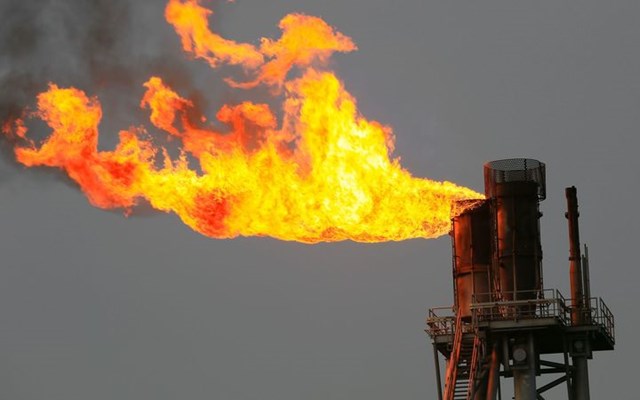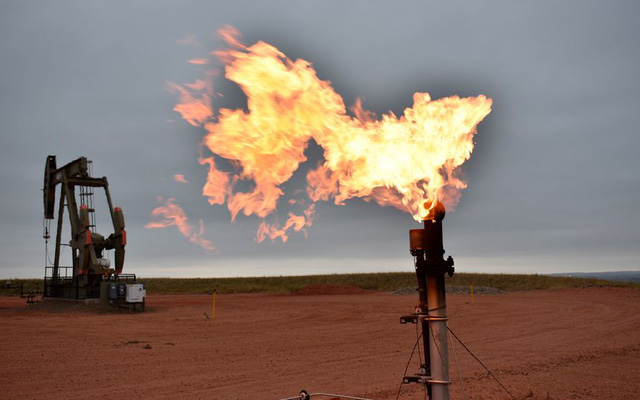Oil is often the “king” of the energy market, leading other commodities to follow suit. Over the past few weeks, however, oil has been overtaken by natural gas, an energy that for decades has been largely priced in oil contracts. The oil market outlook will therefore be closely related to the gas commodity.
At the present time, natural gas has become the “guide” in the group of energies. Caused by the decline in global supply, gas prices skyrocketed beyond imagination.
With the price of gas and coal both soaring, oil is not immune. Oil prices started to rise due to spillovers from the gas crisis, as some industries sought to replace gas with oil to ease the economic burden.
Oil prices rose 5% last week
After a very volatile week, US oil prices have risen by nearly 5% in the past week, despite Russian President Vladimir Putin on Wednesday announcing that Gazprom would increase natural gas exports to Europe, in the process. when US officials said there were no plans to release strategic oil reserves.
The price of WTI oil for November term ended the last session of the week, October 8, up 1.05 USD, or 1.3%, to 79.35 USD/barrel; for the whole week, the price increased by 4.6%. Gasoline futures prices in the US also hit their highest levels since October 2014.
Brent oil futures in December also increased 44 US cents, or 0.5%, to 82.39 USD/barrel, up 4.9% for the whole week.
Thus, the price of both oils increased for 7 consecutive weeks.
Natural gas prices last week fell from a 13-year record high, and overall the week also fell, but that was only a correction after hitting a record high, the gas market outlook has not yet cooled down.
U.S. gas for November term futures fell 11 US cents, or 2%, to $5,565/mmBtu, down 1% for the whole week, but is still at double the level of the same period last year.
“Natural gas recently rose to its highest level since 2008 due to record low European inventories,” said Marshall Steeves, energy markets analyst at IHS Markit in an interview with MarketWatch. history when winter – heating season – is approaching”, “This has supported the energy group, due to the ability of downstream consumers to look for alternatives such as diesel and fuel oil.”
“Both low global crude and natural gas inventories, coupled with production growth, could leave oil and gas supplies inadequate to meet demand growth,” said Steeves.
Energy consulting firm, Rystad, thinks oil demand could increase by 1 million bpd this winter due to the need to switch from gas to oil for heating and electricity production purposes alone.
That is sending oil prices soaring, with Brent crude marking a three-year record high this past week, topping $83 a barrel, while US West Texas Intermediate (WTI) crude hit a seven-year high of 79. USD/barrel.
U.S. oil prices surged to levels not seen since 2014.
With the OPEC+ group not accelerating the rate of oil production faster than expected and global oil demand recovering from the Covid-19 pandemic, it is likely that the upward momentum in oil prices will continue to be maintained.
Oil will regain the “king” throne? The time has not yet come, but the price is expected to continue to rise.
Will US inflation only increase temporarily?
The US Federal Reserve has for many months held the view that the rate of increase in inflation in the US is “transient” and will ease when the bottlenecks in the supply chain are reduced. But that didn’t convince some investors. They argue that when the economy reopens, a rapid increase in demand for goods will affect prices.
If rising inflation is not temporary, that could force the central bank to raise interest rates earlier than expected to try to curb prices from rising too much.
The September US consumer price index, due out next Wednesday (October 13), will give some clues as to what factors are pushing up US inflation.
A Reuters survey showed that analysts expect the US consumer price index to increase in September similar to August, at about 0.3% month-on-month.
Meanwhile, Barclays analysts forecast “core commodity inflation will continue to outperform targets as manufacturing sectors struggle to keep up with demand and to restore inventories.” stockpiles”, and “The tension in the global supply chain is likely to take some more time to ease”.
Although used car prices – the main driver of high inflation in previous months – have dropped, international shipping costs remain high. Energy prices, which can boost inflation in all sectors of the economy, have also risen since mid-September. Core CPI, which excludes food and energy prices, is more volatile than expected, and is expected to continue to be impacted in the coming months if rising energy prices drive production costs up.
This week’s increase in energy prices has raised expectations that inflation will soar to its highest level since May.
The energy crisis shows no signs of abating
With worldwide demand simultaneously recovering as economic activities resumed after a prolonged period of stagnation during the pandemic, combined with OPEC + announcing that it would continue to maintain its plan to raise interest rates. The rate was announced many months ago, and the US government announced that it is monitoring the energy market but has not announced immediate action to cool down oil prices, the possibility of oil prices falling soon is less likely.
“The fundamental backdrop (of the oil market) is that tight supply will continue to steadily push prices up further,” said John Kilduff, co-owner of Again Capital in New York.
Not to mention the tight supply of energy markets and improved fuel demand just in time for the approaching winter. If this winter is colder than usual, the strain on gas supply will be more serious.
The current rise in oil prices has encouraged some gas users to switch to using oil in power generation.
According to Reuters calculations based on Eikon data, the European reference gas price – at the Dutch hub of TTF – on October 8 was equivalent to crude oil at around $200 a barrel, based on value. relative to the energy supplied.
“As prices of other energies such as natural gas and coal continue to be pushed up, bullish risks to the oil market have begun to take shape,” said Bank of America’s Christopher Kuplent.
ANZ also said: “Accelerated gas-to-oil transition could boost demand for crude oil in power generation in the coming winter in the Northern Hemisphere.” ANZ raised its forecast for Q4 2021 crude oil demand by 450,000 bpd from its previous forecast.
References: Ft, Marketwatch, Reuters
T&G International Joint Stock Company
Address: 352 Hue Street, Le Dai Hanh Ward, Hai Ba Trung District, Hanoi
Hotline: 0345786803
Email: hrm@tginterjsc.com
Trang web: http://tginternationaljsc.com





















